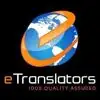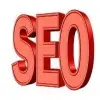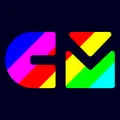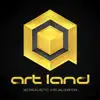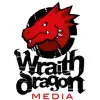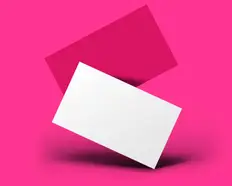Chat med AVA - Din AI-Virksomhedskonsulent
Hej, jeg er Ava, din AI-guide til at sætte turbo på din forretning!
Uanset, om du allerede har en virksomhed eller drømmer om at starte en, er jeg her for at hjælpe dig med at gøre din vision til virkelighed med AI-drevne freelancere. Del dine forretningsmål, og så vil vi skabe et projekt sammen, som vores talentfulde freelancere kan byde på. Lad os gøre din vision til virkelighed!
Jeg har en virksomhed
Jeg er ved at starte en virksomhed
Noget gik galt, da vi prøvede at sende samtalen til din e-mail. Prøv venligst igen senere.
Du kan kun gemme din samtale én gang pr. time. Prøv venligst igen senere.
Din samtale er for kort. Bliv ved med at chatte med Ava for at kunne gemme.
The types of graphic design your business might need
What type of graphic design should you use for business? In this exhaustive guide we discuss every different type of design your business might need.
29. apr. 2019 • 22 minutters læsning
Opdateret 3. dec. 2020 af Brodie F.
B
Teknisk Andenpilot
Kopiering til clipboard fejlede. Prøv venligst igen efter justering af dine tilladelser.
Kopieret til udklipsholder.
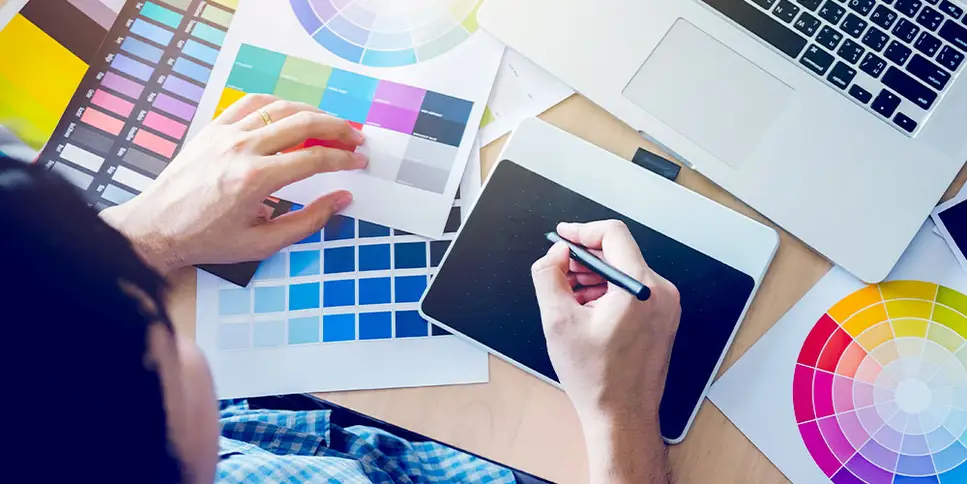
Establish and elevate your website’s brand with a diverse range of design specialists.
Graphics design might be one of the most disrespected professions out there. Every man and their dog thinks they’ve got the chops to pull off a great design with a one-hour crash course on Photoshop. We blame the plucky parents who stick every fingerpainting up on the fridge, regardless of the quality.
When it comes to representing your service and brand, you don’t want to cut corners on design. The internet is much less forgiving than your dear, sweet mother. Below we’ve rounded up all the different types of design you’re going to need launching a product or service, the skills required for each, and the tools they’ll likely use to get the job done.
Find a Great Designer for Your Project
Logo and branding design
Your logo and branding are a shorthand for your company's identity. A logo is often the first impression you get to make with would-be customers so it needs to be eye-catching, memorable and where possible, it should communicate what your company provides and your core values.
Besides word of mouth, your logo and branding will be the first thing a potential customer or user associates with your company, so make it count.
Logo and branding design isn’t a once and done practice. It’s widely accepted that a company should rebrand (or at the very least, revisit) every five years or so. Think about the Airbnb logo and branding. We guarantee that when you picture it, you’re thinking of the current “Bélo” marque. But that logo has only existed since 2014. Before that, Airbnb sported a comparatively simple blue bubble font as its logo. Here’s a fascinating write-up on Airbnb’s 2014 logo update . Use it as inspiration for creating your own.
Why do you need it?
Your logo and branding form a consistent identity that sticks in the minds of potential customers. This serves as the public face of your company. Studies have found it takes 50 milliseconds for people to form a visual impression. It’s also an early sign of professionalism and quality. Bad logo design can make your entire company look untrustworthy and amateur.
There’s also the dreaded pitfall of accidentally creating a logo that resembles something it’s not meant to. In some cases, it’s something lude. In other cases, like the recent Slack logo update, it can accidentally resemble a swastika. Another rule of thumb: if you’re logo can be mistook for a) something sexual or b) a swastika, consider firing your designer.
But, seriously folks, why do you need a great logo design? Consider this: there are well over 2 million apps on iOS and Android. Every single day, more and more are being added. If you want your brand to make an impact, your logo needs to be able to catch the eye of anyone scrolling through the store (or their own app drawer) at the speed of light.
The same can be said for other online services and small businesses. Digital marketing experts in the U.S. believe individuals are exposed to 4,000 to 10,000 ads each day. What are you doing to make your brand stand out in the crowd?
What should you look for?
A good logo should clearly communicate what your company does. It should be simple and readable, and above all it should be visually appealing.
The most iconic company logo designs of all time are, on a surface level, quite basic and use simple colour palettes: Nike’s “swoosh” conveys speed and movement, Coca-Cola’s swirly, ribbon-like typography is so iconic it doesn’t use or need any iconography, the Apple logo that adorns the devices you use every day is most recognisable not because of the simple apple shape but the “bite” out if its right side and McDonald’s “golden arches” is just a curvy, yellow “M” (that also happen to look somewhat like french fries). The Olympics, National Geographic and Target logos all share one design principle: Anyone with a pen and paper can recreate these logos. As a general rule of thumb, if you’re logo can’t be sketched by a five-year old, it’s not simple enough to be memorable.
Ideally, your logo isn’t just something that lives at the top of your website, or on the icon for your app. It’s something your employees would wear proudly in public. If you’re onto something especially memorable and stylish (and if your brand is aspirational enough), it's even something your users would happily sport on a hoodie out in public. Don’t get us wrong, inspiring your users to wear your financial services brand on a baseball cap is a bit of a stretch. But if your company is lifestyle-focused (i.e. a gym), there are plenty of reasons why a customer or member would one to wear your brand loud and proud. Now get out there and make them a logo worth wearing.
There are plenty of graphics designers who will whip you up company branding and logo but the best offer a number of options and the justification behind their choices. The best freelance graphics designers will want to familiarise themselves with your brand before accepting the job. They’ll want to know your company’s purpose, who your customers are and exactly what kind of first impression you want to make.
You’re going to need a graphics designer with experience with Adobe Illustrator. Files created in Adobe Illustrator are exported as “vectors”, files that can be resized without losing any quality. So whether you’re looking to print your logo on a billboard, embed it on your site, or print it on a business card, you can do so without impacting the design’s resolution.
Featured Work in Graphic Design
Corporate design
If you’re only operating one service within your company, your corporate visual design is going to look a lot like your branding and logo. However, if you provide a number of products and services, it could look totally unique. Think of it like this: if your branding and logo are what you’re slapping on mugs, t-shirts and baseball caps, your corporate design tends to be what will appear on letterheads and other official company documents.
Again, this might not differ from your general logo and branding, depending on the type of company you’re running. There aren’t designers who specialise in “corporate design” necessarily, as it itself isn’t a breakaway profession. Keep that in mind when searching for a graphic designer. If someone can provide branding and logo design, it’s likely they can sort out part of your corporate design too. With that said, there can be more moving parts in “corporate design” than a graphic designer can handle alone.
Why do you need it?
If your company is big enough to require interactive employee training guides, or if you offer members services, like transferring money, your corporate image should run a thread through each and every interaction, unifying the experience for users and employees alike.
For example, you might have a notification jingle associated with your brand. It’s important that this jingle doesn’t grind the listener’s gears after the 10,000th loop but it’s just as important that it’s memorable and easily associated with your brand and product.
Take the Nintendo Switch, for example. When it released in 2017, the now infamous “click” sound effect played in all promotional material has become synonymous with the console itself and maybe even more iconic than the console’s logo. The sound effect doesn’t just play in advertisements, it also plays across the console’s operating system. It encapsulates the hybrid device’s flexibility and ease of use. It’s a digital recreation of the physical “click” noise the Switch makes when a user disconnects/connects the controllers from the console, switching between mobile and console gaming (the console’s biggest selling point).
Another example of corporate design would be the iPhone’s default “Marimba” ringtone, or the Mac’s “whoosh” sound effect when an email is sent. These appear in advertisements and movies totally unrelated to the the iPhone or iMac but viewers and listeners still associate them immediately with the Apple brand. It’s free advertising. There’s a 2013 Forbes article that describes the Marimba ringtone as a “badge of honour” for early iPhone adopters. It allowed people who paid the hefty price for an iPhone to publicly broadcast their costly piece of tech. Despite having the option to switch, most iPhone users keep the default Marimba ringtone because of the status is carries. Imagine creating something like that for your own brand.
What should you look for?
Get yourself somebody who can do it all. Depending on the size of your company, you probably want to start small with simple branding and logo design. But as you begin to grow and paid advertising becomes an option, you might want to consider hiring an agency or a crack team of brand specialists to help build and unify your corporate design across every medium. That means having the same sentiment resonate across outdoor advertising, video advertisements, social posts and more.
Realistically, brand and logo design only make up the static, visual representation of your company. If you want to go that one step further, you’re going to need specialists across a number of fields, including but not limited to video production, marketing, sound design and a damn good copywriter.
There are a whole suite of products your creative team will need to be familiar with. For audio design, Adobe Audition is a good starting point and for video, Premiere is the way to go. Different creatives will have their program of choice but for beginners it’s a good idea to start with a software suite with a shared language across products.
Freelance Graphic Design Experts
Web design
So you’ve got your logo, branding and corporate design down pat, now it's time to consider getting your company and/or service live on the internet. If your service is web-based, this step would typically come before spending any significant amount of money on branding and corporate design.
However, if you’re a trade professional or run a small physical shopfront, it’s likely you’ve sorted your branding and logo before your website. Regardless, whatever part of your business journey you’re on, you’re going to need some top-shelf web design eventually.
While logo and branding can be done by any old designer with a bit of artistic flair (and basic knowledge of Adobe’s design products), Web Design is a multifaceted profession, one with a larger pool of skills required.
Why do you need it?
Whether you’re running a small business like a café or a larger web service, you’re going to need a website at some part of your journey. For the latter, your journey obviously begins with web design. If you’re the former, it comes a little later down the line once your business is set up and you’ve got something to show off.
Small businesses can appear in Google Maps search results without a dedicated website, but providing potential customers with as much information as possible, on a modern, user-friendly website never hurts. It can also help your business rank higher in Google Maps’ search results (handy if you’re just one of twenty hairdressers in your suburb).
Depending on the type of website you will be running, you might be able to get away with using a content management system (CMS) like Wordpress or Squarespace. There are plenty of web designers out there with experience with these platforms.
What should you look for?
Think about the last time you searched for the best restaurants in your area. User reviews are a great indicator of quality, but if a restaurant or cafe has a responsive website with photos and menus available to the public, it’s easier to get an idea of what you’re getting yourself in for.
There are many best practices for small businesses to follow to help their store stand out on Google Maps. Gone are the days when a simple website with all the relevant location and contact information on a single landing page would get you by. There are technical SEO experts out there who can help you structure your website to help it rank in Google but to get you started, here’s a helpful guide from Semrush on creating seperate, SEO-optimised pages to help your local business rank in Google Maps. This will all be covered by your technical SEO specialist.
Most web designers have a degree of experience with technical SEO, so you may not need to employ the help of a seperate specialist. Typically, a web design team will be comprised of a web designer and a web developer.
Eventually, you’re going to need to recruit the help of a graphic designer (likely the same you’ve already hired to create your logo and branding design), a technical SEO writer, a general copywriter and a front-end developer who specialises in user experience (UX) design. Your UX designer will work with your graphic designer on your website’s general theme and aesthetic, but they will also take on the user testing, site architecture and interaction design of your website/service.
Featured Work in Graphic Design
Packaging design
If your website or service is selling a physical product, whether that’s handcrafted soaps or organic hair care products, you will need an experience packaging designer to make sure your product makes a great first impression before you begin shipping. If your logo and branding are your first impression with a potential customer, your packaging design is the first date. It’s (part) of the reason your first customer decides to take this relationship to the next level and order that second shipment.
Why do you need it?
Of course, the logo and branding that you’ve already sourced from an experienced graphic designer will also adorn the physical product you sell, but a packaging designer will take into consideration the shape and dimensions of your product and packaging as well as the materials used (especially for perishable food products).
Packaging designers are the unsung heroes of the ecommerce world. Every time a teenager receives an iPhone for Christmas and shreds the cardboard box without a second thought, a packaging designer sheds a single tear. If you take the time to appreciate the design of the iPhone box, you will notice its ingenuity. Apple have engineered the box of the iPhone to make the unboxing process feel significant, momentous. The act of peeling the first security sticker off and slowly sliding the contents of the package out has been specifically engineered to provide a sensory experience that makes the hardware inside feel elegant and regal.
You’ll also notice that many cheaper, everyday products like soaps and candles will be wrapped in paper and sealed with string. These give them a more handmade, crafty feel (even if they are mass-produced by a huge corporation).
More practically, you need a packaging designer to make sure your product arrives to your customer in one piece. If your product is particularly fragile, your packaging designer will take into consideration the negative space needed to fill with packaging foam or shock mount packaging materials. If your product is a perishable, your packaging designer will take will make the call on whether vacuum-sealed or preservation packaging (e.g. aluminum-lined) are required and economically viable.
What should you look for?
Your packaging designer will need to work with closely with your logo and branding designer to create packaging that is on-brand, visually appealing but also practical and affordable.
While Adobe offers a perfectly capable 3D design tool with Adobe Dimension, there is a whole suite of services more popular amongst packaging designers. Esko in one such service. Esko’s most popular product is ArtiosCAD, a popular structural design software specifically created for packaging design with dedicated features for product development, virtual prototyping and manufacturing. ArtiosCAD also provides the tools necessary for point-of-purchase (POP), point-of-sale (POS) and free-standing-unit (FSDU) design if you’re aspiring to have your product in supermarkets and shopping centres.
Esko also provides the popular Studio software. Studio is a mix of plug-ins and add-ons for use in Adobe Illustrator. As we mentioned earlier, it’s never a bad idea to keep all of your design projects within one ecosystem but even so, Studio is a supremely popular product in its own right. Big brands like Nike and AstraZeneca Pharmaceuticals use and advocate Esko’s Studio software.
With that said, any designer who specialises in 3D design will already have their weapon of choice, so it's best to focus on their portfolio and past work rather than the tools they use.
Freelance Graphic Design Experts
Advertising design
Here’s where the fun begins. Advertising design is where classically trained artists get to flex. Almost antithetical to the basic construction of company branding and logo design, advertising designers are allowed to be a little more abstract, a little more obtuse.
While you almost definitely don’t want your logo and branding design to be interpreted as something it's not meant to, adopting the exact opposite frame of mind can result in some seriously memorable advertising campaigns These are the kind of projects artists win awards for and when their personal brand comes into play they become more invested and commit a little more TLC.
Advertising design is where the old adage “a picture is worth a thousand words” rings most true. Depending on your product, your advertising design needs to convey as much as possible about your product, or corporate brand in a single image, while using the shortest call to action as possible.
It needs to be on-brand enough so the audience knows which company is speaking to them and what product they are selling but obtuse enough to hold the audience’s attention for an extended period of time. This is why so many advertisements use visual metaphors and surrealism in their design. It makes the audience feel smart. And when your audience feels smart, they feel happy. And when they feel happy, they associate their happiness with your brand.
Why do you need it?
Every serious company needs some sort of advertising design at every stage in their journey. For newcomers, a successful advertising campaign could be their make or break but even the most established brands continue rolling out advertising campaigns to keep their brand in the public conscience.
Take a leaf out of Nike and Facebook’s 2018 campaigns. Can you show us a single person in the universe who doesn’t know what Facebook is or what products Nike sells? No. Yet in 2018, Facebook launched a huge outdoor campaign that sought to reestablish trust after the Cambridge Analytica scandal, with posters and billboards stating “Fake news is not your friend” while Nike made a memorable social statement with a simple campaign where the words “Believe in something. Even if it means sacrificing everything” were superimposed over a close-up of ex-NFL star Colin Kaepernick.
These campaigns created more buzz than the products themselves did over 2018 and it’s all in the name of maintaining (or in Facebook’s case, repairing) brand awareness.
What should you look for?
Advertising design is an iterative process that’s needs to be refreshed far more often than branding and logo design. As such, you’re going to need a team of creatives working on a regular to full-time basis or an agency who specialises in rolling out timed campaigns across the year.
Of course, that all depends on your budget and how far along your business journey you are. If you’re just starting out and maybe looking to run a few paid Facebook advertisements, you can get away with a graphic designer (preferably one with an advertising and marketing background) and some basic knowledge of how paid advertising works across social platforms like Facebook, Twitter and Instagram.
If you’re a little further along and you’re starting to consider outdoor, video or audio advertising, you’re going to need a more robust design team (and eventually an entire marketing team). There’s no one right tool for advertising design. Depending on your needs, you’re going to need professionals skilled in image, video and audio editing software, video and audio production experts, marketing vets and, in some cases, voice and on-camera talent.
Featured Work in Graphic Design
Print design
You’ve got your logo. Your branding is sorted. Your website is alive and kicking. Now it’s time for some dope merch. Choosing a designer who specialises in print will allow you to manufacture quality products for advertising, internal communications, signage and brand merchandising.
Why do you need it?
We’re not here to add to the chorus of folks that say print is dead. In actual fact, there are still plenty of advertising opportunities in the print world, and if you’re a digital native who came up on the web, you’re going to need somebody who knows the medium well if you plan on advertising in the glossies.
Those with a background in print design will know what the ideal layout is for your advertisement’s illustrations and graphics, as well as what colours to use based on the ink and paper type. Print design is becoming something of a lost art but going in without any expertise could be catastrophic.
If your website, product or service is free, merch might actually be your primary plan to make some degree of money from your passion project. If you’re an established company and brand, it’s more likely something you give out to employees and university students for free to help spread brand awareness. Either way, a time will come when you need hoodies, shirts, coasters, coffee mugs and more designed and printed. I
f people are paying for your merch, congratulations. People are paying you to advertise your service or product. That’s a rare situation to be in and only tends to be the case for personality-driven services like podcasts or YouTube channels with large followings.
If your company or brand doesn’t muster the same kind of enthusiasm in your customers, you can still deck them (and your employees) out with free merchandise.
What should you look for?
We live in a world where on-demand print services like Printful, Zazzle and Redbubble have become the preferred option for manufacturing and distributing company merchandise. The lightning fast turnaround and incredibly simple ordering process of such services takes a lot of the hassle out of print design.
The one downfall to ordering merchandise through an on-demand print provider is that you don’t get a first-hand look at the merchandise until it has arrived on your doorstep (an issue with any online shopping experience). Thankfully, trusted sites like Printful and Redbubble are incredibly transparent about the sizing of their products and the materials used. Plus, you can always skim the user reviews if you have any concerns prior to ordering.
Ordering via these services is a breeze, but they still require you to provide your own logo and design. Your first order will likely be a basic logo print on shirts, hoodies, coffee mugs etc. but it’s never a bad idea to include print design in the brief for your latest advertising campaigns.
It’s also a smart move to include your designer and marketing specialist in any conversations about print design. Your designer will take into consideration easily missed print details, like the best fabric and colour to print on and the ideal graphic sizing and positioning for each product. Print on-demand services provide a huge selection of products including but not limited to shirts, hoodies, coffee mugs, tote bags and phone cases.
If you’re looking for unique product designs for a bigger PR campaign, like Microsoft’s Xbox Onesie or Inflatable Controller , you will need to search out more specialised product designers (or hire an external PR agency to sort it out for you).
Freelance Graphic Design Experts
Environmental design
Now we hook a hard left into a completely different domain of design: environmental.
Environmental design is an umbrella process that covers professional fields like architecture, city planning, landscape architecture, interior design and lighting design. For this guide, we’re going to cover customer-facing design (e.g. physical retail stores) and internal environmental design (e.g. corporate offices).
Why do you need it?
If you’re running a small business or planning on opening a chain of stores, environmental design can play a huge part in making a visit to your brick and mortar store a memorable one.
Think about the most unforgettable retail experience you’ve ever had; was it to an Apple Store? Surrounded by the blinding fluorescent white and incredibly helpful/professional staff that make you feel like you’ve stepped into The Good Place? Or was it to an endangered all-you-can-eat Pizza Hut buffet in a novelly shaped restaurant?
These experiences might have stuck with you for a multitude of reasons. Maybe the service was friendly and efficient or maybe there was a seemingly infinite amount of pepperoni pizza on deck.
The quality service and product are what made your visit memorable but it’s the look and layout of both establishments that you picture every time you fondly remember unbridled access to the soft serve machine. There’s also a deeper conversation to be had about consumer psychology and the tactics used by corporations to influence purchasing decisions but that’s likely something your marketing and design team will have experience with.
The same can be said for a corporate office. Depending on your line of work and the size of your company, you could have armies of employees, clients, partners and couriers marching through your doors every single day. Why not make their time in your office something to remember? There’s a laundry list of poor office design choices that have been scientifically proven to reduce morale, reduce focus and, in certain cases, have a detrimental impact on your staff’s health.
There’s plenty of documentation online on the basic dos and don’ts of office design (e.g. natural lighting where possible, a healthy balance of private and collaborative workspaces) but a professional designer, architect and/or office fitout specialist will know to take all of this into consideration.
As your company scales up, office planning and environmental design will become more and more important. While you don’t need to go full startup and install a slippery dip in every meeting room, you do need to make sure that your office is designed with a modern sensibilities that communicate your brand and, most importantly, provide your employees with a safe and ergonomic work environment.
What should you look for?
Like advertising design, you’re going to need to assemble a diverse team of professionals from a wide variety of vocations to completely execute an environmental design project. Since we’re discussing graphic design, specifically, let’s take a look at the type of designer you should look for and the kind of software they will need experience with.
To kick things off, you will need to find a reliable graphic designer who specialises in computer-aided design (CAD) and 3D modelling software. Some popular choices for 3D modelling and architectural design are Sketchup (which has a free version), Revit, 3D Studio Max and Solidworks.
The once-dominant AutoCAD is still a popular choice amongst veteran designs but it is quickly being eclipsed by the competition (Revit, in particular). Any experienced product designer worth their salt will be well-versed in the world of CAD software (and will have their own preferred weapon of choice) but for the purposes of environmental design, a designer with a background in building architecture and civil engineering will be required.
Featured Work in Graphic Design
3D design
We’ve already covered environmental design and product design, which both fall under the 3D design umbrella. They might be two of the most common 3D design requirements for businesses but there’s a whole world of modelling and animation software that can be used to elevate your branding.
It’s also entirely possible that 3D modelling and animation is core to your business; most video game developers, film studios and advertising/marketing firms recruit full-time 3D designers with experience modelling and animating.
Why do you need it?
While there’s no shortage of live action media, more and more television shows, movies and advertisements include some degree of 3D design. It might be as simple as modelling your company logo in 3D to bookend your video content (more on that in a moment), it could be as complex as creating an 3D-modelled mascot like Compare The Market’s Meerkat, and it could be somewhere in-between, animating select scenes and frames in your promotional material.
With a unique idea and some affordable software, animating or modelling your logo (or mascot) in 3D can help raise brand awareness. T
he Meerkat example is, without a doubt, one of the greatest success stories in brand marketing and it all began with a 3D designer. Compare The Market’s Meerkats have been made into plush toys (which are currently selling upwards of $60 on eBay) and have starred in short promotional videos alongside Superman, Batman and more. That is some god-tier brand marketing and you could be one 3D design away from your own loveable mascot.
If an adorable, huggable mascot doesn’t quite fit your brand, there are still many ways 3D design can amplify your branding, many we’ve covered already, including conceptual design, architectural design, packaging and product design and various marketing ploys, like in-store display and trade show booth designs.
What should you look for?
Given the broad range of 3D modelling and design applications, there’s a huge suite tools that designers favour. As we’ve already covered product and environmental design tools like AutoCAD, we’re going to shift the focus to 3D modelling tools favoured by designers who specialise in VFX (visual effects), 3D modelling and CGI (computer generated imagery) animation.
If it’s specifically a corporate mascot or character design you’re after, you will need to hire a 3D designer with (preferably) experience in animation. Typically, these designers will provide a variety of 2D concept sketches created in Adobe Photoshop or Illustrator based on the requirements outline in your brief. After both parties agree on the best fit for your company and brand, the 3D designer will proceed to sculpting the 3D model using software like Maya, Zbrush, SketchUp or Blender.
If you have a very specific design in mind, it’s worth browsing over the 3D designer’s portfolio and past projects to get a feel for their style. Some designers specialise in cute and cuddly mascots, others specialise in more realistic 3D designs, so it’s a good idea to scope out what you’re getting yourself and your designer into before setting expectations.
Freelance Graphic Design Experts
Motion graphics design
Whenever we discuss logo and branding, we’re constantly hammering home two principles: make it unique and make it stand out. In the most practical sense, animating your logo gives you more frames to play with, more opportunities to stand out and tell your story.
If you run an online service or you’re at the stage where you have a budget set aside for video marketing, you’re going to require the services of an animator and 3D designer eventually. A 3D designer with experience in animation can help you create animated branding for your advertising, website and promotional material. If you’re looking to invest in animation further, they could even help you create a completely animated ad campaign.
Why do you need it?
With the focus shift from television commercials to online advertising, motion graphics have become more important for brands than ever. No longer are audiences forced to sit through your 15 to 30 second advert while they’re waiting for Storage Wars to come back, these days they can simply keep swiping or hit that “skip ad” button. That’s where a fetching three second motion graphic can help.
If a potential customer is swiping mindlessly through Facebook or Twitter, you’ve got 2 to 3 seconds max to stop that incessant thumb from swiping, so a striking motion graphic that incorporates your branding in logo could be the greatest weapon in your marketing arsenal.
Take a look at these stellar examples of big brands using motion graphics to communicate their brand and services.
Then there’s the more in-depth path of creating a cartoon advertising campaign. Using animated graphics in your advertising campaign can help make complex or serious topic areas a little easier to swallow. One of the most successful animated ad campaigns that comes to mind is the Metro Trains’ (Melbourne) Dumb Ways To Die series , which promotes rail safety with cartoon depictions of typically grisly deaths. The reach of Metro Trains’ Dumb Ways To Die campaign blew expectations out of the water, winning seven Webby Awards in 2013, five Grand Prix awards at the Cannes Lions International Festival of Creativity and spawned multiple mobile game spin-offs.
Now, you might not have a Meerkat or a Dumb Ways to Die on your hands but it’s definitely your north star.
What should you look for?
Thankfully, there are a lot of transferable skills across different design disciplines so it’s possible someone on your design team already has the tools and the know-how to animate your logo and create a short, snappy motion graphic to represent your brand.
If not, there’s a fair chance your line of work doesn’t require a full-time 3D designer and animator. For timed ad campaigns and brand refreshes, you will want to seek the aid of a marketing agency with a background in animated campaigns, or a specialised freelancer with experience in animation and 3D modelling.
As with 3D design, your ideal candidate will have already worked on campaigns that resemble your own vision, so browsing their portfolio and past projects before reaching out is a must.
Specialists with the ability to create motion graphics will have experience with animation, 3D design, corporate design/identity, illustration and graphics design. Depending on their level of expertise, 3D designers and animated will have experience with 3D animation tools like 3ds Max, Cinema 4D, Blender, Houdini and the industry favourite, Maya.
Featured Work in Graphic Design
Relaterede Historier
Tal med en af vores Tekniske Andenpiloter for at få hjælp med dit projekt
Anbefalede artikler specielt til dig

If your creativity needs a jump start follow Dr Christyl Johnson's tips to get back on track fast
4 min read

The secret to a winning website design is a winning brand identity. We show you how to create one
9 min read
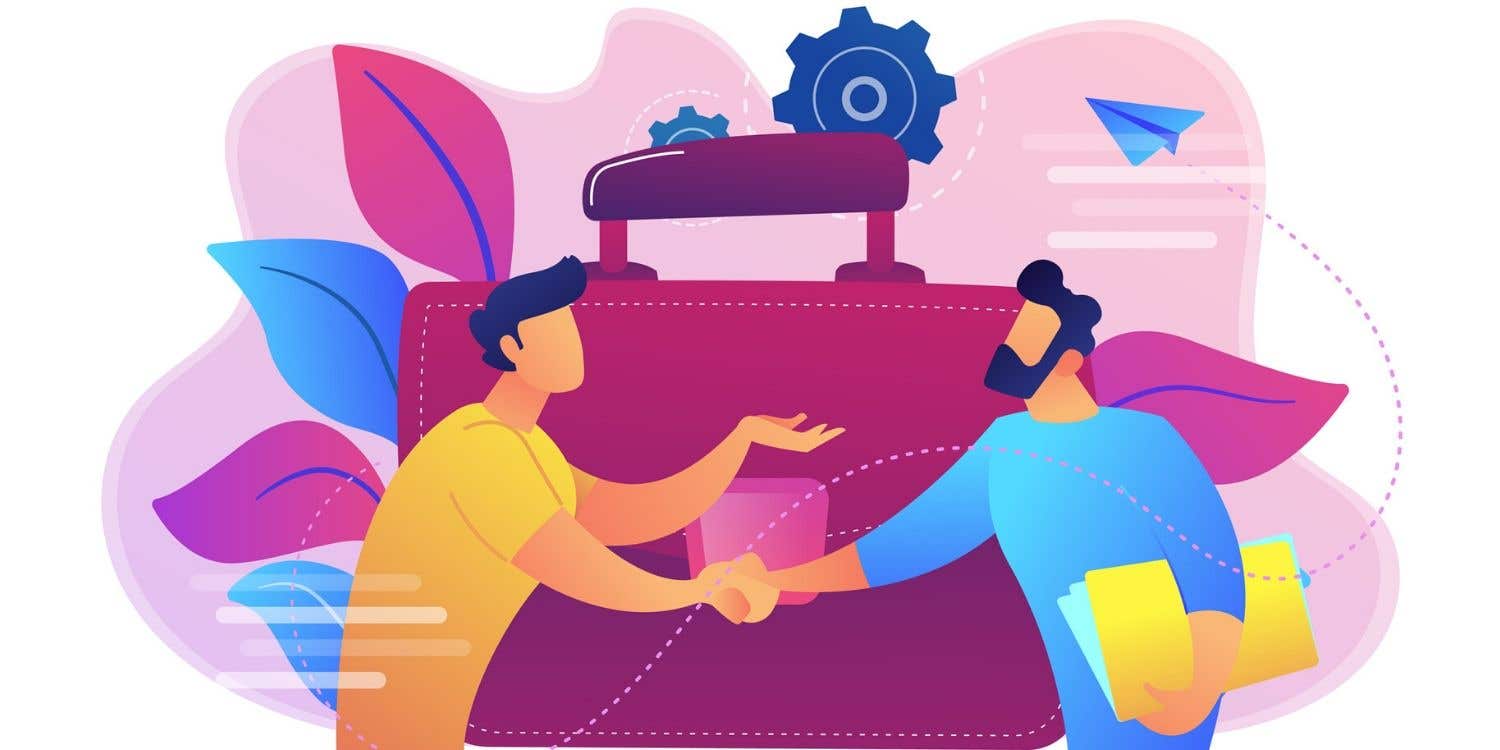
Hiring freelancers for a project can save you time and money, but it's important to understand how to get the best results
4 min read
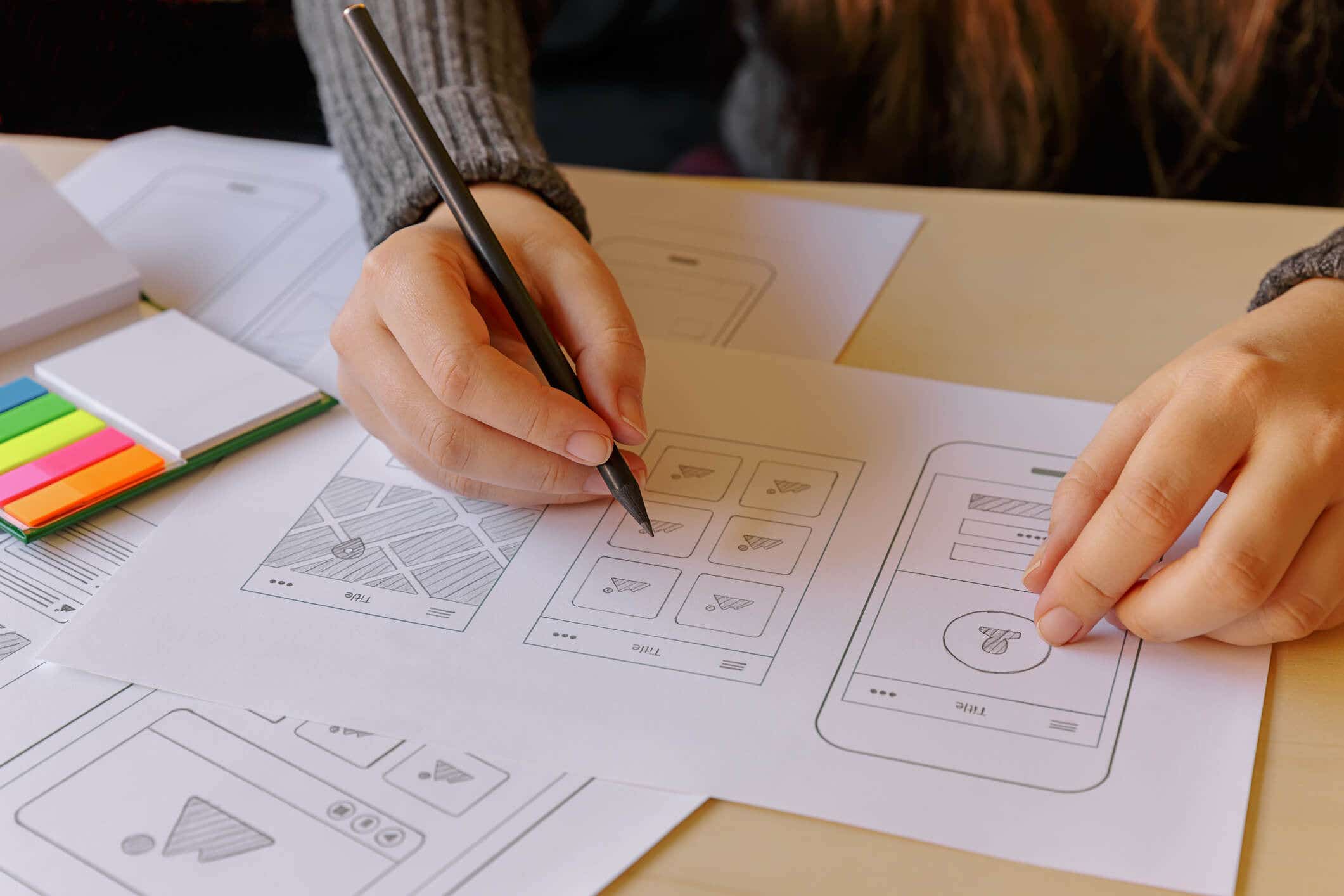
Wireframe creation is critical to website design, but it doesn't need to be complicated. We will teach the stress-free process.
5 min read
Tak! Vi har sendt dig en e-mail med et link, så du kan modtage din kredit.
Noget gik galt, da vi forsøgte at sende din mail. Prøv venligst igen.
Indlæser forhåndsvisning
Geolokalisering er tilladt.
Din session er udløbet, og du er blevet logget ud. Log venligst ind igen.




















